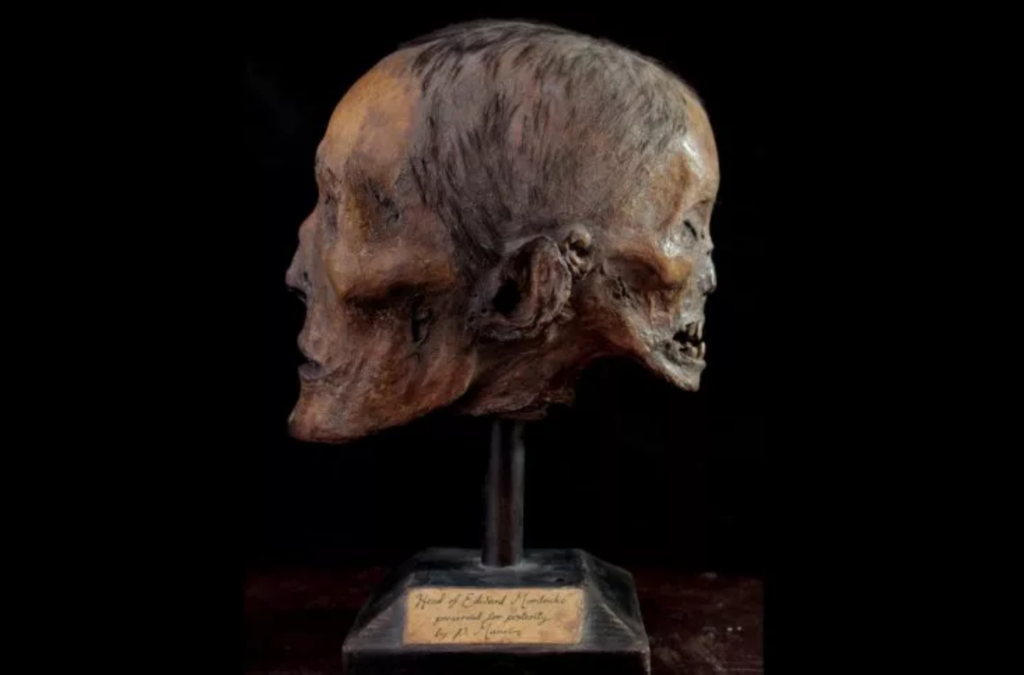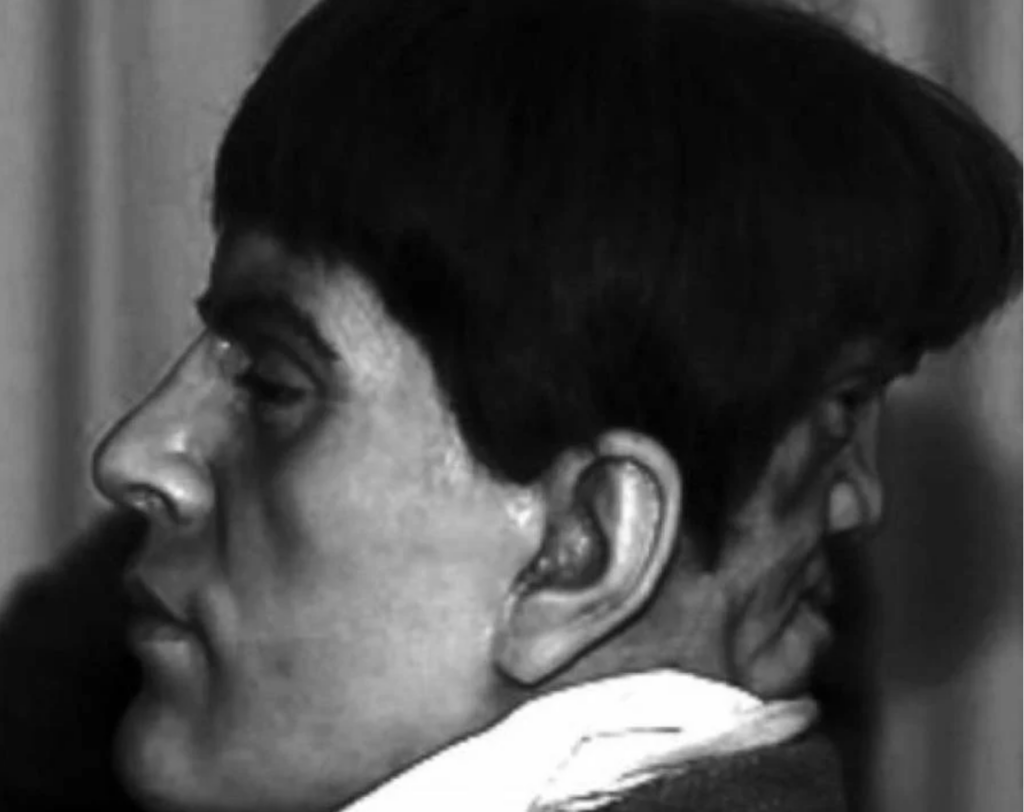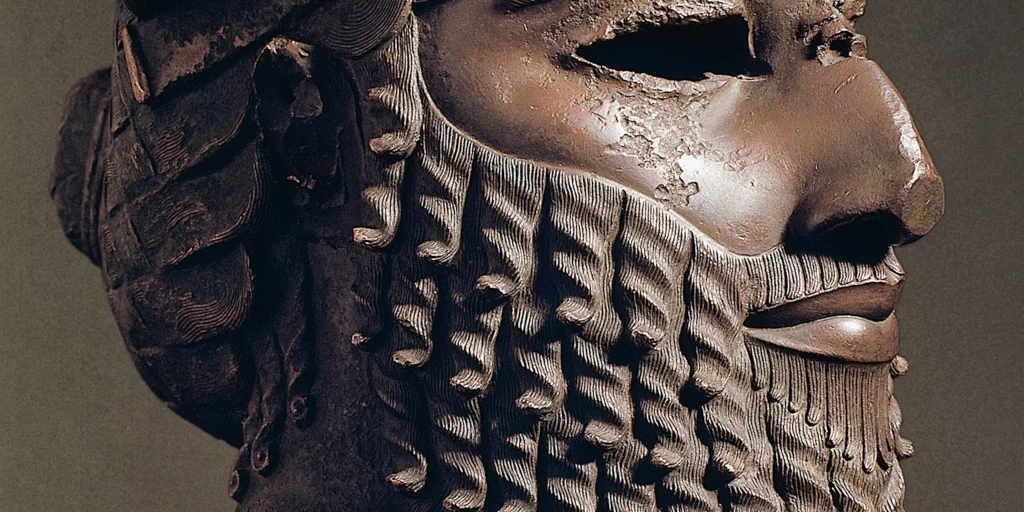Your face is often the most identifiable part of you – but what if you had two? Step into the shadows of a haunting legend that has been carried down throughout the ages: the enigma of Edward Mordrake.
In the 19th century, a man with an inexplicable secret emerged. He captivated onlookers and the public alike because of his peculiar condition.
According to the tales. Mordrake carried an uncanny burden – a face concealed at the back of his head.
This haunting feature was said to possess an unsettling sentience of its own. It tormented Mordrake with its whispers, cries, and even sometimes, laughter.
Edward Mordrake’s tragedy and deformity have since captured the collective imagination. His case crops up in all sorts of publications focused on the strange and unbelievable.
His case has inspired many fictional characters throughout the world of pop culture, television, and film.
A condition that seems to blur the lines between fact and fiction, reality and myths, one must ask oneself: Is Mordrake a historical figure lost to time, or a product of our fascination with the macabre?
In other words, is there truth to the legend or is it all one convincing hoax?

Two-Faced Edward Mordrake
The story of Edward Mordrake, an intriguing figure, and enduring urban legend, is a haunting tale that unfolded in the 19th century.
Mordrake was an heir to the English nobility. He must have been expected to set out to achieve great acclaim and accomplishment. However, he possessed a peculiar and chilling characteristic – a face at the back of his head.
According to the legend, this face could whisper, laugh, and cry. It tormented Mordrake with its unsettling sounds as he tried to sleep during the night.
The young nobleman pleaded relentlessly with doctors to remove the face. He was convinced that it whispered unspeakable horrors only heard in the depths of Hell.
Unfortunately for Mordrake, no physician dared to undertake the daunting task for none had ever experienced such an operation. This left Mordrake to endure his torment with no solution.
Eventually, he was overwhelmed by despair. He tragically took his own life at the young age of 23 years old.
Accounts tend to describe Mordrake as a handsome figure, his natural face quite attractive and charming.
However, the additional face that emerged from the back of his head, reportedly that of a woman, evoked a mix of both allure and grotesqueness.
It occupied a small portion of the back of his head. This mask-like face exhibited signs of intelligence, but almost malicious intent. It would leer when Mordrake experienced joy and smile when he found himself in tears.
Although the face could not see, eat, or speak, its lips would incessantly gibber, and its eyes would follow the gaze of onlookers. Mordrake repeatedly referred to it as his “devil twin.”
Despite attempts by his doctors to stop him, Mordrake managed to get his hands on poison and prematurely end his life. By his request, he was reportedly laid to rest in an unmarked grave.
The haunting tale of Edward Mordrake was made most infamous by the medical encyclopedia Anomalies and Curiosities of Medicine. In 1896, this documented his story, adding an air of credibility to the legend.
Mordrake’s tragic life, with its eerie duality and the relentless whispers from his second face, continues to evoke a sense of fascination and melancholy.

Origins of the Legend
It is believed that the tale of Edward Mordrake originated from an 1895 article written by fiction writer, Charles Lotin Hildreth, for The Boston Post.
Hildreth’s article showcased various cases of what he referred to as “human freaks,” including Mordrake. He claimed that he discovered these cases in old reports from the “Royal Scientific Society.”
The next year, in 1896, the medical encyclopedia, Anomalies and Curiosities of Medicine, co-authored by Dr. George M. Gould and Dr. David L. Pyle included an account of Mordrake. This was directly copied from Hildreth’s article and credited to a “lay source.”
The encyclopedia entry is likely where the story began to gain massive traction. It captured the attention and wonder of both medical professionals and the public.
While the encyclopedia described the physical characteristics of Mordrake’s condition, it did not provide a medical diagnosis for this rare deformity. However, it did make speculations about the possible cause of the birth defect, from a scientific perspective.
These included such conditions as craniopagus parasiticus. This is a condition leading to a parasitic twin head with an undeveloped body. Or, diprosopus, also known as bifurcated craniofacial duplication. Alternatively, an extreme form of parasitic twinning.
Ultimately, they weren’t certain. The true origin of the Mordrake tale, therefore, can be traced to the work of Hildreth.
Yet, this begs the question: was Hildreth telling the truth? Or was the entire piece simply a work of fiction?
Fact or Fiction?
Ultimately, the truth of Edward Mordrake’s existence is highly doubtful. There are several reasons to question the authenticity of his story.
Firstly, there is the claim that the second face on his head could speak. This raises skepticism, as it would require a separate brain for consciousness, which is not plausible.
Moreover, the origin of the Mordrake tale provides further evidence that it is fictional. The account of Mordrake published in the medical encyclopedia, Anomalies and Curiosities of Medicine, only cites “lay sources.”
Science historian Alex Boese discovered that the verbatim account published in a newspaper before the release of the textbook presented Mordrake as one of many “wonders of modern science.”
These beings, including Mordrake, were sourced from the fictional “Royal Scientific Society,” which never existed. This suggests that Mordrake was merely a character in a work of science fiction that gained widespread popularity.
In addition, images that have circulated on social media claiming to show the mummified skull of Edward Mordrake are also false. This is a papier-mâché hoax created by artist Ewart Schindler.
Furthermore, a historian at The Museum of Hoaxes argued that the tale was a 19th-century literary creation lacking scientific plausibility.
It seems the tale of Edward Mordrake, while a fascinating concept that captures the imagination, is instead a falsehood after all.
References
“Edward Mordrake, the Two-Faced Hoax.” Lethbridge News Now, October 6, 2021. https://lethbridgenewsnow.com/2021/10/06/edward-mordrake-the-two-faced-hoax/.
Reuters Staff. “Fact Check: Two-Faced Mummified Head Isn’t Edward Mordrake, but Is Made of Papier-Mâché.” Reuters, July 8, 2020. https://www.reuters.com/article/uk-factcheck-mummified-head-mordrake/fact-check-two-faced-mummified-head-isnt-edward-mordrake-but-is-made-of-papier-mch-idUSKBN24928U.
Wagner, Bayliss. “Fact Check: Edward Mordake, an English Noble with Two Faces, Is a Literary Creation.” USA Today, July 22, 2021. https://www.usatoday.com/story/news/factcheck/2021/07/22/fact-check-two-faced-edward-mordake-literary-creation/7985429002/.

